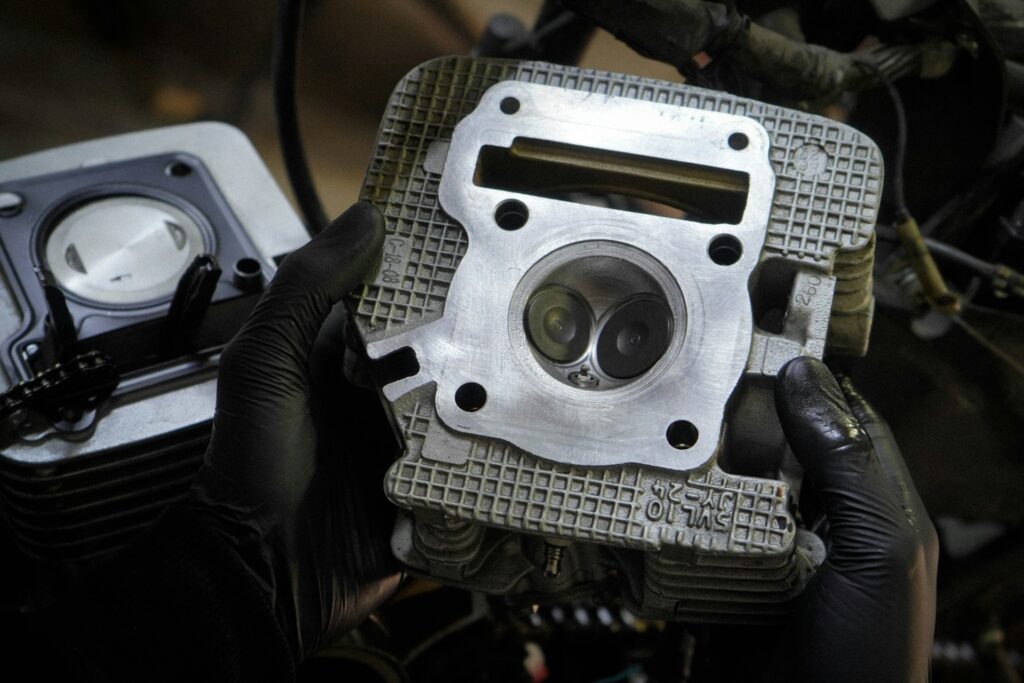
Small engines power our daily lives, from lawn mowers and leaf blowers to pressure washers and generators. When they run smoothly, these machines make our work easier and more efficient.
However, when they fail, it can disrupt our entire day. Understanding the common issues that affect small engines is the first step toward effective troubleshooting and repair, ensuring your equipment maintains its reliability for years to come.
This post will walk you through some of the most frequent problems encountered with small engines. We’ll explore the causes behind these issues and provide clear, step-by-step solutions to get your equipment back up and running.
Learning the basics of small engine repair can save you time, money, and the frustration of dealing with a faulty machine. Let’s get started on the path to becoming more self-sufficient with your equipment maintenance.
Engine Fails to Start
One of the most common issues is an engine that refuses to start. This problem can often be traced back to a few key components related to fuel, spark, or air.
Potential Causes
- Fuel Issues: The engine may be out of fuel, or the fuel itself could be old and stale. Stale fuel, typically older than 30 days, can lose its combustible properties and clog the carburetor.
- Spark Plug Problems: A dirty, damaged, or disconnected spark plug can prevent the ignition system from creating the necessary spark to start the engine.
- Clogged Carburetor: Old fuel can leave sticky deposits in the carburetor, blocking the flow of the fuel-air mixture needed for combustion.
How to Fix It
- Check the Fuel: Ensure the tank has fresh, clean fuel. If the fuel is old, drain the tank and carburetor and refill with new fuel.
- Inspect the Spark Plug: Remove the spark plug and check for any signs of damage or buildup. Clean it with a wire brush or replace it if necessary. Make sure it’s properly connected.
- Clean the Carburetor: If you suspect a clog, you may need to clean the carburetor. This can sometimes be done with a carburetor cleaner spray, but a more thorough cleaning may require removing and disassembling it.
Engine Runs Rough or Stalls
An engine that starts but runs erratically or stalls during operation can be frustrating. This issue often points to problems with the fuel or air supply.
Potential Causes
- Clogged Fuel Filter: The fuel filter prevents dirt and debris from entering the carburetor. If it becomes clogged, it can restrict fuel flow and cause the engine to run poorly.
- Dirty Air Filter: A dirty air filter restricts the amount of air entering the carburetor, which can throw off the fuel-air mixture and lead to rough running.
- Carburetor Issues: The carburetor may need adjustment or be partially clogged, preventing a consistent fuel supply.
How to Fix It
- Replace the Fuel Filter: Fuel filters are inexpensive and easy to replace. It’s good practice to change them regularly as part of routine maintenance.
- Clean or Replace the Air Filter: Check your air filter. Paper filters can often be tapped clean, but if they are very dirty or oily, they should be replaced. Foam filters can usually be washed, dried, and re-oiled.
- Adjust the Carburetor: The carburetor has adjustment screws that control the fuel-air mixture. If you are comfortable doing so, you can consult your owner’s manual to make slight adjustments to see if it improves performance.
Engine Overheats
Overheating is a serious problem that can cause permanent damage to your engine. It’s crucial to shut down an overheating engine immediately and diagnose the cause.
Potential Causes
- Low Oil Level: Oil is essential for lubricating and cooling the engine’s moving parts. A low oil level can cause increased friction and heat.
- Blocked Cooling Fins: Air-cooled engines rely on cooling fins to dissipate heat. If these fins are clogged with grass, dirt, or debris, air cannot circulate properly.
- Running Lean: An improper fuel-air mixture (too much air, not enough fuel) can cause the engine to run hotter than normal.
How to Fix It
- Check the Oil: Turn off the engine and let it cool. Check the oil level using the dipstick and add the correct type of oil if it’s low.
- Clean the Cooling Fins: Use a brush or compressed air to clean any debris from the cooling fins on the engine block.
- Inspect the Carburetor: Ensure the carburetor is providing the correct fuel mixture. An adjustment or cleaning may be necessary.
Excessive Smoke from the Exhaust
The color of the smoke coming from your engine’s exhaust can tell you a lot about what’s going on inside.
Potential Causes
- White or Blue Smoke: This usually indicates that the engine is burning oil. This can be caused by overfilling the crankcase with oil or by worn-out components like piston rings or valve seals.
- Black Smoke: Black smoke typically means the engine is running rich, meaning it’s burning too much fuel. This is often due to a dirty air filter or a malfunctioning carburetor.
How to Fix It
- For White/Blue Smoke: Check the oil level. If it’s too high, drain some out. If the level is correct, the issue may be more serious, such as worn piston rings, which might require professional small engine repair.
- For Black Smoke: Start by cleaning or replacing the air filter. If that doesn’t solve the problem, the carburetor may need adjustment or a thorough cleaning.
Engine is Difficult to Pull-Start
If you find yourself wrestling with the starter rope, there could be a few culprits making it difficult to pull.
Potential Causes
- Engine Flywheel Brake Engaged: On many lawn mowers, a safety bar must be held down to disengage the flywheel brake. If this brake is engaged, the rope will be very difficult or impossible to pull.
- Starter Assembly Issues: The recoil spring or the pawls (the parts that grab the flywheel) inside the starter assembly might be broken or stuck.
- Hydro-lock: In rare cases, fluid like oil or fuel can leak into the cylinder, preventing the piston from compressing.
How to Fix It
- Disengage the Flywheel Brake: Make sure you are holding the safety bail bar against the handle before you try to pull the rope.
- Inspect the Starter Assembly: If the rope pulls out but doesn’t retract, or if it doesn’t engage the engine, the starter assembly likely needs to be repaired or replaced.
- Check for Hydro-lock: Remove the spark plug and try to pull the starter rope. If fluid shoots out of the spark plug hole, you’ve found the problem. Once cleared, replace the spark plug and investigate the cause of the leak.
Engine Loses Power Under Load
An engine that runs fine when idle but loses power when you start to use it is a sign that something is preventing it from performing at its peak.
Potential Causes
- Clogged Fuel System: A partially blocked fuel filter or dirty carburetor can fail to supply enough fuel when the engine’s demand increases under load.
- Governor Issues: The governor is responsible for maintaining a consistent engine speed. If it’s not working correctly, the engine may not be able to adjust to an increased load.
- Dull Blades or Chains: On equipment like mowers or chainsaws, dull cutting attachments force the engine to work much harder, leading to a loss of power.
How to Fix It
- Service the Fuel System: Perform a full troubleshooting and cleaning of the fuel system, including replacing the fuel filter and cleaning the carburetor.
- Check the Governor: Ensure the governor springs and linkages are intact and moving freely. Refer to your manual for proper adjustment procedures.
- Sharpen or Replace Blades: A sharp blade or chain not only improves performance but also puts less strain on the engine, enhancing its reliability.
Your Next Steps for Engine Maintenance
By familiarizing yourself with these common small engine problems, you are better equipped to handle issues as they arise.
Regular maintenance is the best way to prevent many of these problems from occurring in the first place. Keeping your fuel fresh, your oil clean, and your filters clear will go a long way in ensuring your equipment starts easily and runs strong.
For more complex issues or if you’re not comfortable performing these repairs yourself, don’t hesitate to seek professional help. If you need more detailed guides or specific parts for your repairs, you can often find valuable resources on this website.
Last modified: September 28, 2025








